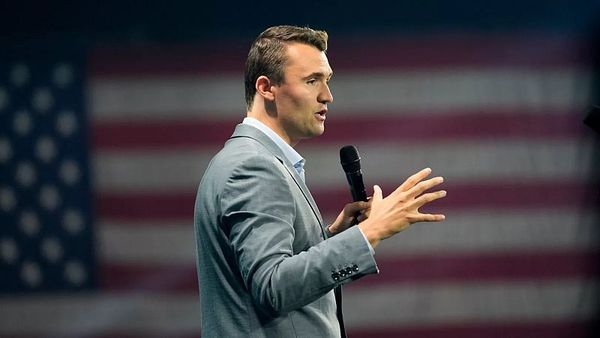On Oct. 10, the attention of many investors will be on Tesla and its thoroughly teased reveal of its robotaxi at an event in Los Angeles. If it happens, it would be the EV giant's first product launch since it turned nearly its full attention to artificial intelligence and solving the challenge of true autonomous driving.
Chief Executive Elon Musk has set expectations sky high. He's touted the robotaxi event as the most significant moment for Tesla since unveiling the Model 3 nearly nine years ago. But despite Tesla's prowess as an EV industry leader, in the bigger picture of the robotaxi trend, the company so far remains all talk. U.S. industry leader Waymo, a unit of Alphabet, and China's robocab top dog Baidu will nonetheless pay close attention on Oct. 10. A full-on robotaxi introduction could signal Tesla is set to become a threat.
At this point, there is no robotaxi market in the U.S., says Stephanie Brinley, associate director for AutoIntelligence at S&P Global Mobility. Waymo is thus far leading the way, experimenting with how to build and scale up the business, city by city. But the technology and its markets are still germinating.
"It's a business and an industry that is very much trying to develop — there is huge potential and everyone sees that potential," Brinley said.
Tesla Stock, Robotaxis, and FSD
Core to the entire endeavor is full autonomous driving technology. For robotaxis, that means an empty driver's seat. That's what Musk and company see as Tesla's primary value driver moving forward.
In fact, ARK Invest estimates that around 90% of Tesla's enterprise value and earnings will be attributed to the robotaxi business in 2029. ARK Invest now has a Tesla stock price target of 2,600 per share in 2029.
A number of other companies — including Waymo and Baidu — are also banking on self-driving to spur investor interest.
In that regard, the Oct. 10 event could potentially be a historic launch for Tesla.
"It marks what I believe is going to be the beginning of robotaxis, autonomous and FSD (full self-driving) coming to the consumer market over the next three to five years," Wedbush Securities analyst Dan Ives, a longtime Tesla bull, said in an interview.
Ives sees Tesla's "real monetization opportunity" less in robotaxis and more about introducing true full autonomy into its vehicles. Ives added this would lay the groundwork to have 10 million Tesla vehicles on the road with fully autonomous capabilities in the coming years.
"That's the holy grail for Tesla when it comes to core growth," Ives said.
The Chance For Disappointment
The buzz around Tesla's event and the actual launch of commercial driverless cabs by Waymo in three U.S. cities has rekindled excitement around driverless vehicles.
"If it weren't for generative AI taking all the headlines, 2024 would probably go down as the Year of Autonomous Vehicles," Bernstein analyst Nikhil Devnani wrote to clients on Sept. 17.
However, ahead of the Tesla robotaxi event, analysts and business insiders are tempering expectations. Many warn that it will be more than a decade before truly autonomous vehicles and robotaxis are available at scale in the U.S.
The reasons for this vary. Most are based on regulatory hurdles, ongoing safety concerns and an already competitive and difficult autonomous taxi business model.
Ives said that, for Oct. 10 to be a success, Musk and Tesla must lay out the technology, how it will scale, a time frame and a broader vision for robotaxis in the U.S.
"A great but slightly disappointing event would be if it's more vision and talk but you don't actually see the technology that convinces investors this is real," Ives warned.
Tesla's Early Adopters Make Perfect Robotaxi Consumers
S&P Global Mobility's Brinley expects Tesla's robotaxi event next month to answer a number of questions about Tesla's readiness to deploy true self-driving vehicle technology.
However, Brinley sees the development of the vehicle program as a multiyear effort that should not be expected before 2026-27. She also stressed that currently Tesla's system is not fully autonomous.
"It's a technology that is still 10 years away," Brinley said. "Do not expect personally-owned autonomous vehicles to be sold until early next decade."
More broadly, Brinley believes Tesla's robotaxi reveal will "shine a light" on the technology. She added that the EV giant's consumer base is more likely to try out the emerging technology compared to more traditional vehicle purchasers.
"They will be more willing to test and push the boundaries than mainstream buyers so we can't necessarily assume it's an easy transition to a mainstream buyer doing the same thing," Brinley said.
Waymo Leads The Way: Reaches 100,000 Weekly Rides
If Tesla does, in fact, introduce a robotaxi, it will have catching up to do. Waymo has thus far taken up the pole position in the robotaxi arms race, according to S&P Global Mobility.
The Google-backed self-driving company has thus far topped more than 100,000 paid trips per week in Los Angeles, San Francisco and Phoenix, a Waymo spokesperson told IBD. Waymo's robotaxi service will expand to Austin and Atlanta next year, through a partnership with Uber.
Meanwhile, GM-backed Cruise has restarted testing of its autonomous vehicles, or AVs, in Dallas, Houston and Phoenix. Cruise suspended operations late last year after one of its vehicles hit and dragged a pedestrian in San Francisco.
Another player to watch: Amazon. The e-commerce and cloud-computing behemoth paid $1.2 billion in June 2020 to acquire the self-driving car startup Zoox. Zoox is testing its custom-built, boxy robotaxi vehicles in Las Vegas and Foster City, California They are performing additional tests in cities including Austin, Texas, and Miami.
Autonomous Vehicle Stocks To Watch
In the meantime, the focus for Google stock remains on the strength of its digital advertising sales and generative AI offerings. Waymo, while high-profile, is small enough still to be tucked away in Google's 'Other Bets' category.
With autonomous vehicles still in early stages, analysts expect a broad range of companies will have roles to play.
The Global X Autonomous & Electric Vehicles ETF, for instance, includes Google and Tesla, as well as auto giants like Toyota and General Motors. General Motors owns a majority stake in the Cruise venture. But it also includes smaller technology providers such as Mobileye and Luminar Technologies, as well as companies providing materials for electric vehicles and batteries.
Microsoft has never intended to produce its own car. But the tech giant has partnered with developers such as Cruise to offer the cloud-computing power and AI capabilities.
There's another familiar name to watch: Nvidia. Nvidia's automotive segment racked up more than $1 billion in sales over the past 12 months, with a list of customers that includes Tesla.
As Nvidia looks to build off a historic rally, the automotive industry is an "under-discussed" opportunity, Global X analyst Tejas Dessai told IBD.
Weighing Robotaxi Investing
Investors have been wary in recent years of pouring money into autonomous vehicle plays. Ram Machness — the chief business officer at Arbe Robotics which develops radar and operating systems for automated vehicles, drones and robots — said in a recent interview that since the beginning of 2024 there has been a renewed interest from some of the major auto companies in autonomous vehicle tech.
"Whoever has deep pockets is investing in this. But private investors, the private market, they are still on the fence," Machness said.
Ives agrees with this assessment, saying "there's a lot of skepticism" about autonomous driving in the investor community.
"For investors, there's always been the hope and vision but it has always been very slow to play out for autonomous driving," Ives said.
"A lot is riding on this for Musk and Tesla," Ives said, referring to the October robotaxi reveal.
Meanwhile, Adam Jonas, Morgan Stanley's high-profile auto analyst, wrote on Aug. 30 that "seemingly out of nowhere" a series of partnerships and Tesla's robotaxi event have "revived investor enthusiasm in robotaxis."
Jonas said the reason for the uptick in investor interest is the jump in large language models and supercomputing technology that is transforming artificial intelligence.
However, Jonas ended that note with a warning: "We urge caution."
Tesla Stock Overshadows Uber And Lyft Stock
Meanwhile, Uber stock and Lyft have been pulled into the robotaxi debate. Tesla's plan for a robotaxi service has acted as an overhang on shares of both companies since Musk previewed his vision in April.
Uber stock lost nearly a quarter of its value between April and early August, before a strong Q2 earnings report helped shares bounce back to slightly below February highs. Lyft stock, however, is down 15% year to date, despite entering April up by nearly 30%.
Uber has responded to some of those concerns by expanding its existing partnership with Waymo earlier this month. In August, Uber also struck a deal with GM's Cruise to offer its vehicles through Uber's app starting early next year.
The partnership marks a long-term shift for Uber. The company sold its own self-driving division in 2020 as part of a broader cost-cutting effort. Now, Uber is telling investors that its app will be a vital partner to companies making self-driving cars.
Lyft has yet to announce partnerships on the same scale. However, the company is taking a similar approach to its larger rival.
"Our role is going to be: How do we welcome as many autonomous vehicles (as possible) onto the platform in a hybrid form?" Lyft Chief Executive David Risher said at a September Goldman Sachs conference.
"This is not going to replace drivers, believe me. There's plenty of demand out there."
Uber's Advantage: Variable Supply
Harry Campbell, founder of The Rideshare Guy blog and podcast for ride-share drivers, said in an interview that he expects autonomous vehicle companies will serve as "fleet partners" to Uber and Lyft. That's in part because it would be difficult to build and operate a fleet of cars that meets varying demand levels from riders.
"If they have enough cars to serve demand on Saturday night, they're going to have way too many on Tuesday afternoon," Campbell told IBD.
Analysts with Bernstein said in a Sept. 17 client note that AVs are already cost competitive to drivers on an active miles basis. But so-called deadhead miles — periods without a rider — mean unit economics still "lag the driver model," in Bernstein's view.
Uber and Lyft, by comparison, have what Campbell described as variable supply. Uber incentivizes drivers to log in and take rides during times of high demand while relying on fewer drivers during times of less demand.
But it could be a different story for Tesla. Musk has described a kind of "Airbnb-meets-Uber" style of car-sharing service. There are a lot of questions unanswered for the idea, but Campbell says the concept could appeal to many Tesla owners.
"If a bunch of people are buying and owning Teslas for their own personal use, then they can make a few extra dollars here and there," Campbell told IBD. "That's a lot different of a model than Waymo, where every single vehicle they produce, they want it to be used 24/7 to increase that utilization and improve their economics."
Pushing Back The Self-Driving Outlook
Tesla's robotaxi event next month could bring fresh excitement to the potential for autonomous driving. But robotaxis still face a long path in most cases before becoming a regular transit option. And the industry has faced some high-profile setbacks.
To that point, a survey in 2023 by McKinsey of industry executives found that the expected timelines for autonomous vehicle adoption across different use cases had slipped an average of two or three years, compared to a similar 2021 survey. Executives view 2030 as the year robotaxis could be available at scale, according to the survey.
"I think it is fair to say that the timeline for when we can expect this has been pushed out over the past couple years," said Kersten Heineke, a partner at McKinsey and co-leader of the McKinsey Center for Future Mobility. "If you'd asked me in 2018 if we would see robotaxis at scale in 2025, I'd have bet on it — and I would have lost."
Still, he added that the industry has come a long way in the past two to three years. The next step is scaling beyond individual cities, he says.
New Locations, New Hurdles
But getting to that stage will require working with a long list of federal, state and local regulators, analysts and observers say. Most importantly, both government officials and consumers must be convinced of the safety of the technology.
"That will be the key and the dominant factor for adoption in the Western world," Machness, the Arbe Robotics executive, said of the safety perception of a self-driving car.
In addition, new locations can offer new technological hurdles. Self-driving cars to this point have focused on cities with dry and warm climates. Beyond that, it's a question of economics.
"There's still a huge chunk of work that needs to go into optimizing operations to get to a steady state of profitability," McKinsey's Heineke added.
Projected Sales For AVs
Since its launch in June 2010, Tesla stock has created its own subculture of new millionaires. But despite recent innovative momentum, the autonomous vehicle industry continues to face a lack of "sufficient capital to support technology development," according to a recent S&P Global Mobility report. The market analysis adds that widespread adoption of the technology at scale will be quite slow over the next decade.
By 2034, sales of autonomous light vehicles in the U.S. are expected to hit about 230,000 robotaxi-capable autonomous units, suggesting market share of less than 1.5% a decade from now, according to S&P Global Mobility data.
Meanwhile, in China, S&P Global Mobility forecasts potentially 1.5 million autonomous vehicles sold annually by 2034, or about 5% of light-vehicle sales.
Europe is expected to advance more slowly with sales beginning later than either the U.S. or China and rising to only 37,000 units in 2034, according to S&P Global Mobility estimates.
For comparison, Brad Rosen, chief operations officer of Nodar, a maker of 3D vision technology for automated vehicles, gave IBD a rough estimate that by 2040 autonomous robotaxis will be widespread in areas across the U.S., potentially making up around 50% of available taxis by that year.
Robotaxi: A Big Enough Ocean?
Nodar's Rosen believes Tesla is betting on computing power increasing fast enough to train AI on nearly 100% of all possible outcomes that could take place on the roads — making safety a nonissue for fully autonomous vehicles.
There's just one problem: The computing speed isn't there yet, according to Rosen.
"Elon Musk is saying that 'If a human can drive with only vision then we can too' but what he doesn't address is that the human brain is just significantly more powerful and versatile as compared with a piece of silicon today," Rosen added.
However, despite the obstacles in the road for autonomous vehicles and with Waymo representing a "major formidable player" in the robotaxi market, Tesla bull Ives sees the long-term autonomous vehicle market as potentially being worth around $800 billion over the next 10 years.
"This is a big enough ocean for two boats," Ives said, referring to Waymo and Tesla.
YOU MAY ALSO LIKE:
Is Tesla Stock A Buy Or A Sell?
Uber Partners Up With Cruise. Why Analysts Expect More Self-Driving Deals.
Get Full Access To IBD Stock Lists And Ratings
Learning How To Pick Great Stocks? Read Investor's Corner
Stock Market At Bullish Levels; Nvidia, Tesla Rival Jump Into Buy Areas







